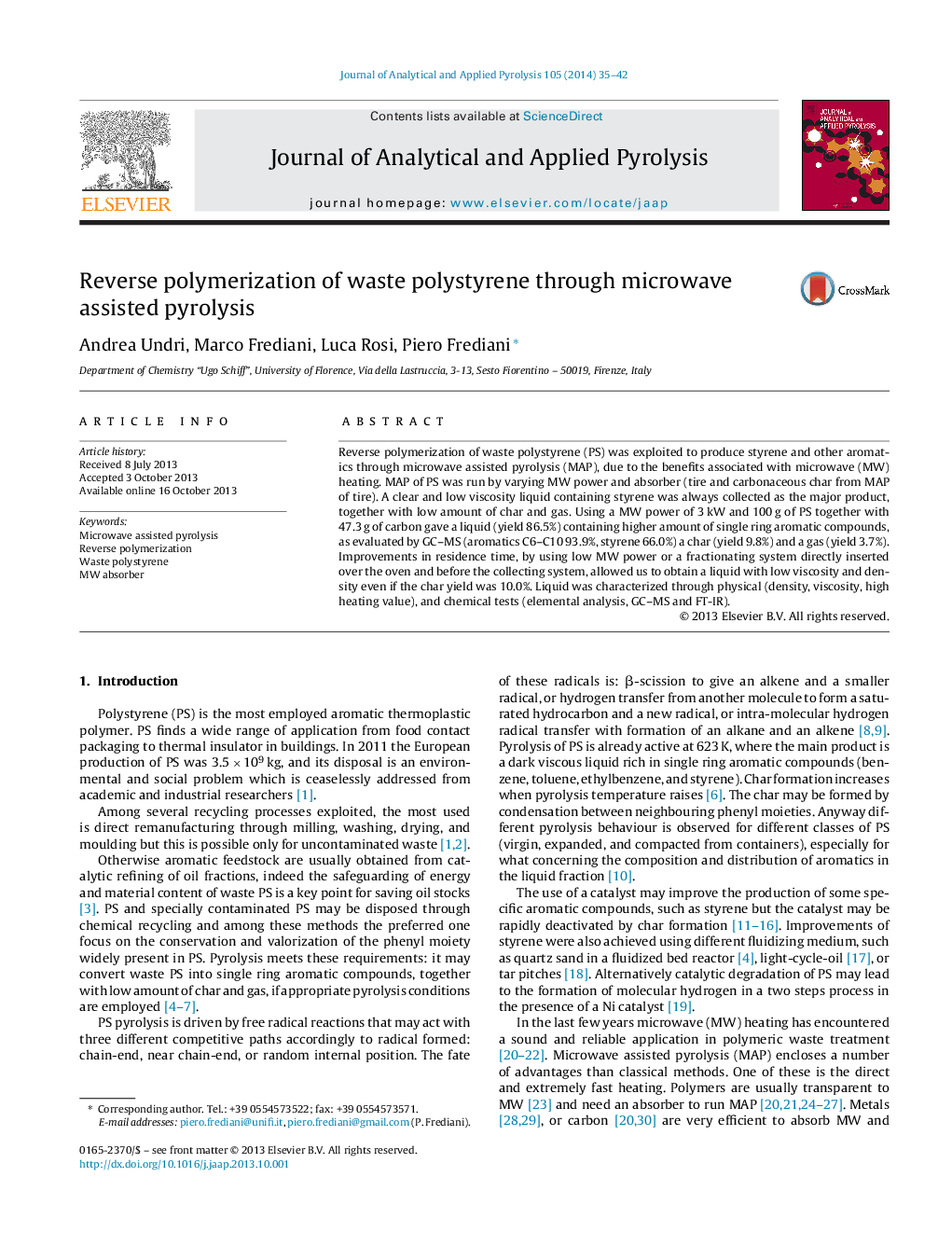| Article ID | Journal | Published Year | Pages | File Type |
|---|---|---|---|---|
| 1198350 | Journal of Analytical and Applied Pyrolysis | 2014 | 8 Pages |
•Reverse polymerization of polystyrene was performed.•Waste polystyrene was recycled to styrene through microwave assisted pyrolysis.•Styrene concentration was a function of microwave power.•Environmental friendly disposal of polystyrene was reached.•Different microwave absorber was employed.
Reverse polymerization of waste polystyrene (PS) was exploited to produce styrene and other aromatics through microwave assisted pyrolysis (MAP), due to the benefits associated with microwave (MW) heating. MAP of PS was run by varying MW power and absorber (tire and carbonaceous char from MAP of tire). A clear and low viscosity liquid containing styrene was always collected as the major product, together with low amount of char and gas. Using a MW power of 3 kW and 100 g of PS together with 47.3 g of carbon gave a liquid (yield 86.5%) containing higher amount of single ring aromatic compounds, as evaluated by GC–MS (aromatics C6–C10 93.9%, styrene 66.0%) a char (yield 9.8%) and a gas (yield 3.7%). Improvements in residence time, by using low MW power or a fractionating system directly inserted over the oven and before the collecting system, allowed us to obtain a liquid with low viscosity and density even if the char yield was 10.0%. Liquid was characterized through physical (density, viscosity, high heating value), and chemical tests (elemental analysis, GC–MS and FT-IR).
